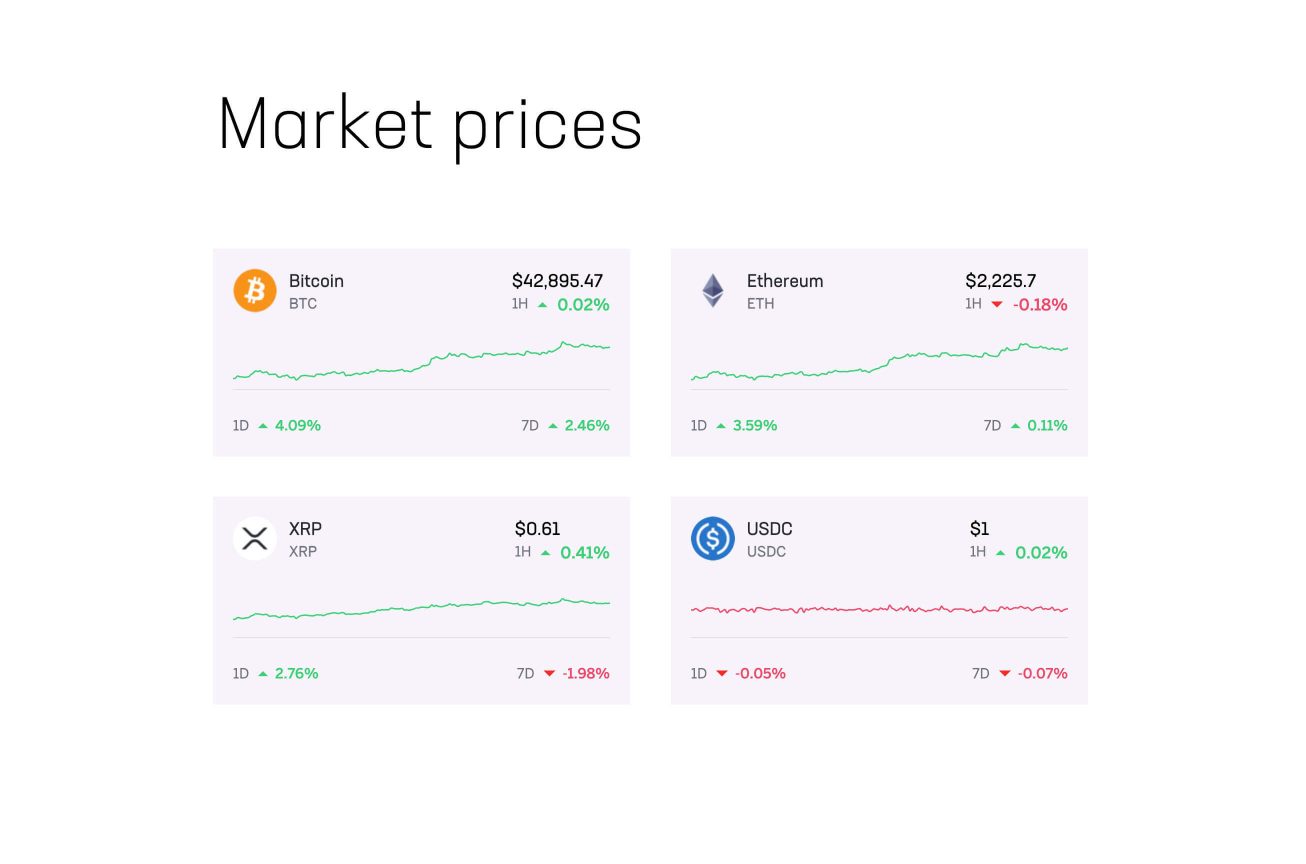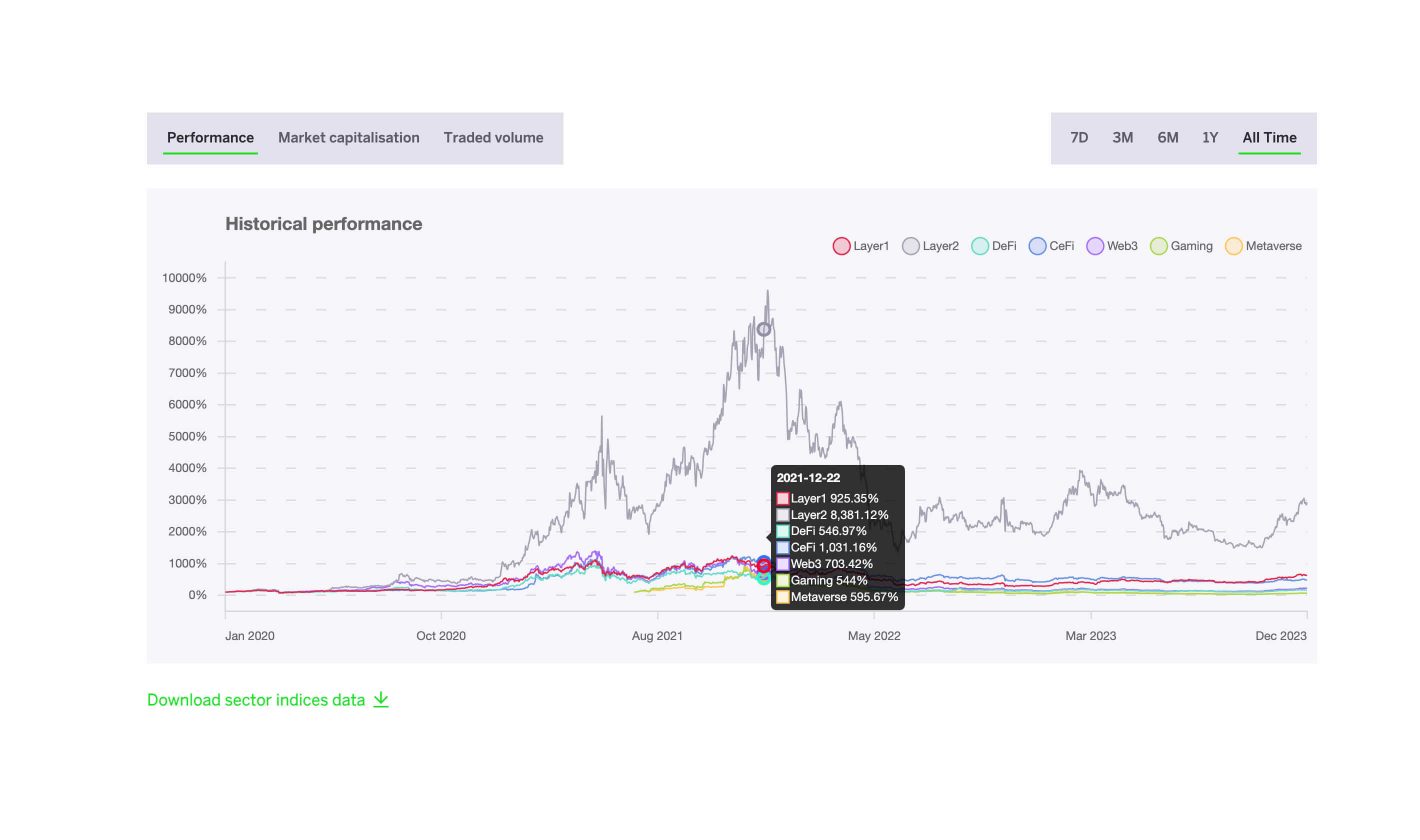Meet our Client
Our Client is an innovative neobank for buying, selling, and holding digital assets. Based in Switzerland, it allows investing in crypto with maximum security.
It actively engages with individual private investors and also positions itself as a bank for banks and the B2B sector.
The challenge: Keep up with growth
Forbes predicts favorable developments for crypto in 2024, including the legitimization of Bitcoin in the US, its price rise, and the adoption of tokenized payments by banks. All this is likely to attract attention to crypto from banks and investors as they seek new opportunities for business growth.
Anticipating customer growth from expanding their licenses globally, our Client wanted to be ready for a wave of new users. As they also were strengthening connections with traditional banks, they needed to improve the back-end functionality to satisfy higher demands on the system. That required changes to the technologies used.
To address those challenges, the Client focused on refining the platform’s UI, shifting their back end to another technology, and expanding coverage by performance tests.
SENLA became their software outsourcing partner tasked with carrying out the needed upgrades.
Why SENLA?
⦿ Senior talent. The Client wanted more than just to augment their tech team. The tech management requested highly independent senior experts capable of contributing ideas and driving the product forward. We provided such talent within 10 working days.
⦿ Expertise in banking. Being an innovative bank, our Client required high expertise in creating fintech solutions. Our many successful projects in this industry were a significant advantage.
⦿ Location. The Client preferred a team in Europe, specifically in Poland. Having experience with Polish outsourcing, they valued a familiar background.
⦿ Close contact. Before signing the outsourcing contract, we held 3 meetings to get to know each other better and align our strategies with the Client’s objectives.
The team: All-senior experts
The first developers from SENLA joined the project in 2022. Currently, a large team of senior experts works on different modules of the platform.
The majority of them focus on developing the customer portal using React. QA specialists contribute to automated testing. And recently Java developers joined the team.
We're proud that when requesting more specialists, the Client now often refers to the expertise and communication skills of the SENLA experts already on board.
Crypto innovations, outsourced expertise
Focus on growth while we handle the software
React: Enhancing front end
Our React developers handle the visual elements of the customer portal, presenting it in a user-friendly way.
One of the experts is part of the core team responsible for the libraries and mono repository used by all developers.
User interfaces and platform modules
Most of our React developers focus on creating the interfaces of the Client's platform, taking care to implement consistent UX/UI and visual style principles. Alongside the front end, they also develop admin panels for different portal modules.
- One team is focused on the crypto module and everything related to buying and selling crypto. In the personal account, users can see their wallets with various assets, order purchases or make transfers, and change the methods of storing funds. Various forms, tables, and charts with live data updates help track current exchange rates and their dynamics.
- The onboarding team handles the service ensuring the smooth 24/7 integration of new customers into the bank’s system. It guides the newcomers through a step-by-step wizard, providing forms for completion, gathering necessary info, and setting up user accounts.
- The tokenization team works on the UI of the module responsible for converting assets such as real estate or art into tokens for partial sale. By acquiring tokens, the bank’s customers can reserve ownership rights on a portion of the tokenized asset.
Libraries and monorepo
The core team is at the heart of the portal development, building component libraries for all front-end engineers. Their responsibility is significant, as their work's outcomes are utilized by everyone, and errors can lead to considerable technical debt.
Key deliverables include a rich library of visual components serving as UI building blocks and a fully custom form library with improved render optimization for faster UI updates, better responsiveness, and UX overall.
Another task involves supporting the monorepo used to store code for different projects and share code standards. Its benefits for the team include visibility, collaboration, and consistent tooling.
The developers in this team can also write libraries themselves if some functionality is reused in different modules.
"For me, the experience of working in the core team is priceless because it has a significant impact on the entire development process. Essentially, your clients are developers who use the code. On one hand, your code should be enjoyable to use, and on the other, you aim to eliminate errors and define boundaries. Developing library code is a unique experience, which is quite challenging to gain outside open-source projects. It's very valuable for both me as a specialist and SENLA as a software provider."
Java: Transforming back end
After recently partnering with several traditional banks and experiencing an increase in customers and load, the Client needed to transition their back end from TypeScript to Java.
The switch to Java aimed to introduce advanced back-end capabilities and improve performance, efficiency, and stability to provide even better services to users.
As the pioneer Java developers in the team, SENLA’s engineers work alongside the in-house tech lead. Their role demands both high proficiency in TypeScript since the legacy code is written in it, and top experience with Java to be able to engineer all the required features. Hence the need for senior specialists.
The team moves over 5 services of the banking platform to Java, including:
- Service for creating cryptocurrency purchase orders.
- Adapters for integration with brokers via the FIX protocol.
- Service that reserves funds in the traditional bank to facilitate the purchase.
- Order status service, etc.
The transition is planned to take 6 months. The work is carried out module by module with all development risks measured and priorities set.
Using the Java framework Quarkus instead of the more common Java Spring is one interesting detail. This poses some challenges for the team as it's not as easy to handle as Spring, but it ensures better resource utilization and efficiency.
Another feature we develop connects the system with brokers that perform asset transactions. They are connected to the UI through REST API or FIX protocol (Financial Information eXchange) and interact with the physical bank that stores the customer’s funds.
When the customer plans to buy, say, 5 bitcoins, the banking platform reaches the bank through the broker to debit the necessary funds. If the purchase is successful, the user will see it in their account.
QA: Ensuring top performance under high load
Preparing for a stream of new customers, the Client wanted to test how the servers and databases would perform during peak usage.
Performance testing
We needed to test the performance of various processes related to users' digital assets.
- First, our Performance Testing engineers created the testing plan, documentation, and implementation strategy.
- The tools and the overall approach were then presented to and approved by the Client’s tech management. We used Jmeter for testing, and AWS for monitoring.
- After that, we manually conducted test runs on some modules, aligning with architects and DevOps engineers.
- On the agreed-upon day, operations were paused, and we carried out the performance testing with around 10,000 concurrent users.
After each run, we checked the results and identified potential issues. We analyzed the data, and the architects refined the structure, increased the number of virtual processors, and reran the tests.
As a result, we identified several problems, including issues with database query optimization and a shortage of virtual processor resources.
We repeat this procedure for each new module that is added to the bank’s platform.
API tests optimization
We are also adapting simple API tests, initially written in Postman, to the performance testing platform k6, which is integrated with GitLab.
The purpose of this adaptation is to enable online testing and eliminate the need for installing specific software. That’ll simplify and universalize the process for everyone and make it easier to implement changes.
The value: Visually appealing and fast interfaces make crypto banking easier
Our Client is a fast-growing innovative bank, forward-thinking in its every approach. SENLA is excited to be providing business value to their many future-proof initiatives:
- The React-based UI provides the Client’s customers with visually appealing and efficient tools for managing crypto transactions, onboarding, and tokenization.
- The centralized libraries and monorepo ensure maximally efficient development and reduce technical debt.
- The transition of the back end to Java enhances performance, enables advanced capabilities, and ensures system reliability.
- Performance testing secures the platform's reliability under high load, optimizes resource allocation, and identifies critical areas for improvement.
- Adapting the API tests to a modern platform simplifies and universalizes the QA process for everyone.
Take your financial services to the next level with SENLA. Reach out to start the conversation.




